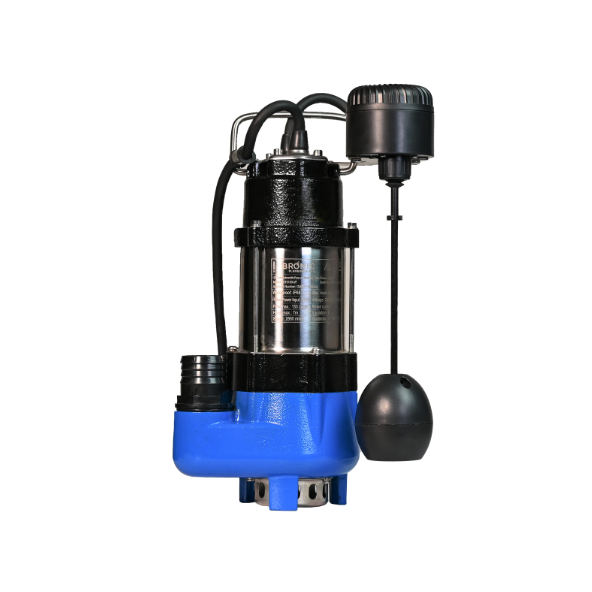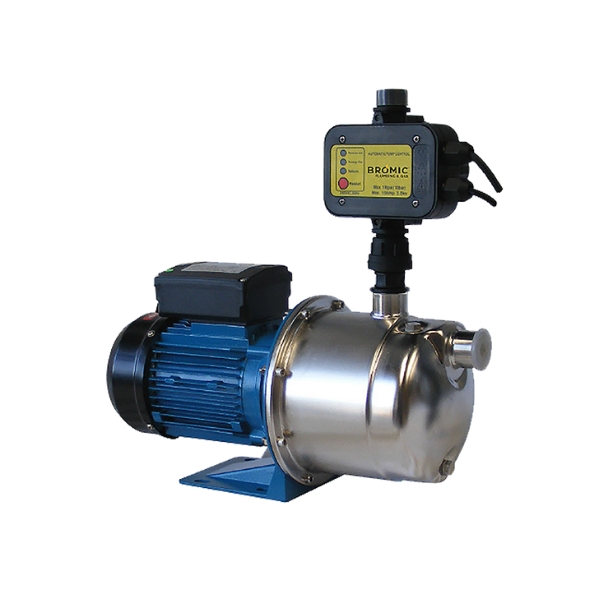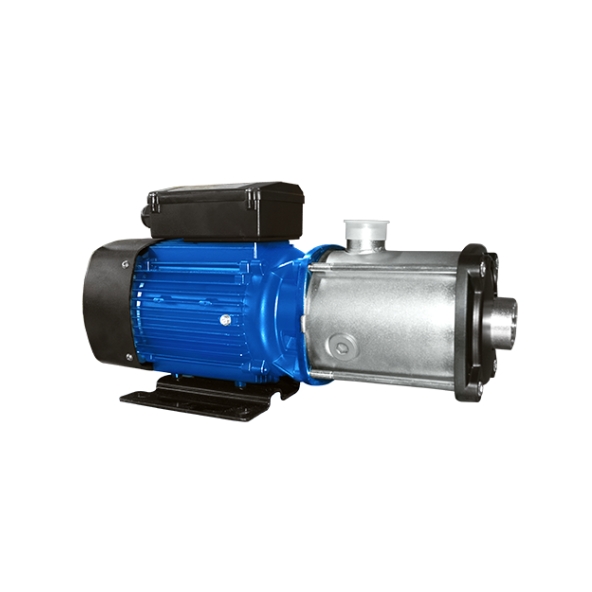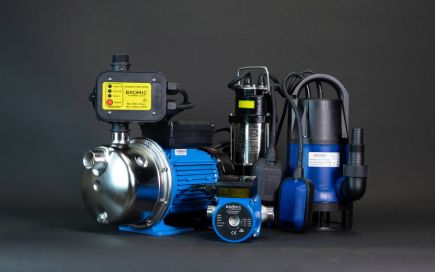Articles
September 16, 2024
Understanding the different types of water pumps on the market is critical for any plumbing professional or DIY expert. Each type has a unique set of advantages and use cases to be aware of.
In this guide, we’ll address the major differences between water pumps to help you understand which is right for you. You can also explore a wide range of Bromic water pumps to find the ideal product for your needs.
Water pumps can be classified in several different ways, based on their style and function. Keep in mind that these categories are not mutually exclusive. The same pump could fit into these categories multiple times.
Here’s a breakdown of some of the major types of water pumps available for professionals and regular consumers.
Submersible pumps sit within a water tank or other water source. As a result, they are much less noisy than free-standing alternatives. They also don’t take up any space outside of the tank.
Submersible pumps are typically more expensive than free-standing alternatives. However, they can offer maintenance cost savings over time, as they are not exposed to outdoor elements.
Submersible pumps also generally do not need to be primed. The technology of a submersible pump is usually used to push water upward, rather than pull water in the style of other pumps. This pushing action is often a more efficient way to pump water, especially at great depths.

Jet pumps are free-standing water pumps installed outside a tank or water source. They often function by using a suction pipe and an impeller (centrifugal pump) to draw water from a tank.
Water then travels to the jet component, increasing the pressure of the water and sending it through its outlet. Jet pumps can be sold with pressure controllers to make them even easier to use.
These pumps are generally contrasted with submersible pumps. While submersible pumps sit within a tank, jet pumps sit outside the tank. This can come with a few drawbacks:
However, jet pumps also have their own advantages, including:

While jet pumps and submersible pumps can rely on centrifugal mechanisms, the term “centrifugal pump” typically refers to pumps that rely solely on centrifugal technology to function.
Centrifugal pumps rely on mechanical energy converted into kinetic energy. This is achieved thanks to rotors known as impellers. These rotors are used to increase the pressure and flow of liquid.
They generally function by pulling water into the central axis of the impeller. Water is drawn into the impeller when the pump creates suction at the inlet.
Water then accelerates outward by the rotating impeller blades. It exits through the vanes and out the pump’s outlet at high pressure.
Centrifugal pumps are typically only used for surface applications. They are not used to draw water from deep wells or other applications requiring high suction lift.
To achieve higher levels of water pressure, multistage centrifugal pumps can be used. A multistage centrifugal pump uses multiple impellers arranged in a series. As the water passes through each impeller, it becomes more highly pressurised.

An alternative to centrifugal pumps is positive displacement pumps. Positive displacement pumps work by trapping a fixed amount of liquid within the pump chamber.
Water is then forced (or displaced) through the pump outlet with each cycle. While centrifugal pumps rely on water velocity to function, positive displacement pumps mechanically move fluids at specific volumes. This is designed to create a highly consistent flow rate regardless of changes in water pressure.
Positive displacement pumps can be categorised into rotary and reciprocating pumps. Rotary pumps use rotational mechanisms such as gears or screws. Reciprocating pumps make use of back-and-forth motion using elements like pistons or diaphragms.
Positive displacement pumps are best used where consistent fluid flow rates are a priority. They are also suitable for handling thicker and more viscous fluids.
Another major classification of pumps to be aware of is well pumps. Well pumps are used to access water from underground sources, typically in rural areas.
Well pumps are generally jet pumps or submersible pumps. Jet pumps can be used to draw water from shallow wells, while submersible pumps are generally required for deeper wells.
Well pump installation can be complex compared to other kinds of pumps. Some wells will require the split installation of a “double-drop” jet pump.
These pumps require the jet assembly to be installed within the water source while the motor is installed separately, above ground. Meanwhile, submersible pumps can be placed entirely within the well.
If you need to draw water from a well, it’s important to use the correct style of pump and install it properly. A high-quality model will last longer and avoid costly maintenance fees.
When using a well pump, ensure you comply with local regulations when drawing and using water.
Purchasing and using the right pump for a given task requires you to think carefully about the following factors:
Bromic offers a wide array of water pumps for various needs, including jet and submersible pumps you can use for a range of purposes. Our products are perfect for everything from rainwater harvesting to commercial projects. We even offer a range of RV and caravan pumps.
When you purchase a Bromic pump, it’s easy to access the technical documents to understand and use your product. You can also get in touch with our team of plumbing experts for further insights.
Explore our range of water pumps today for a complete solution for rainwater harvesting and other commercial and domestic needs.
